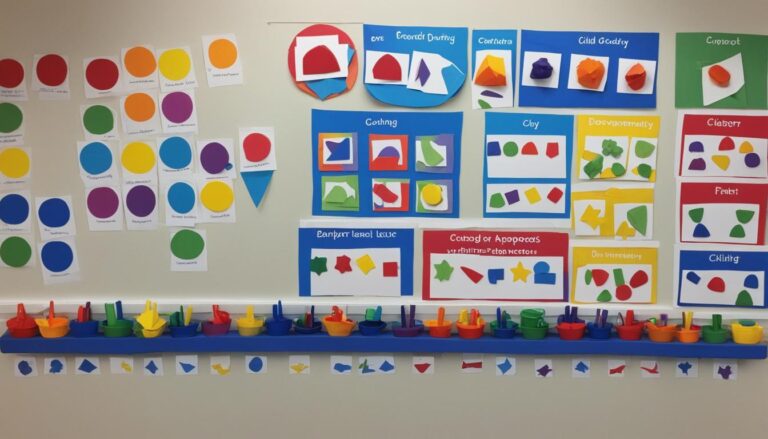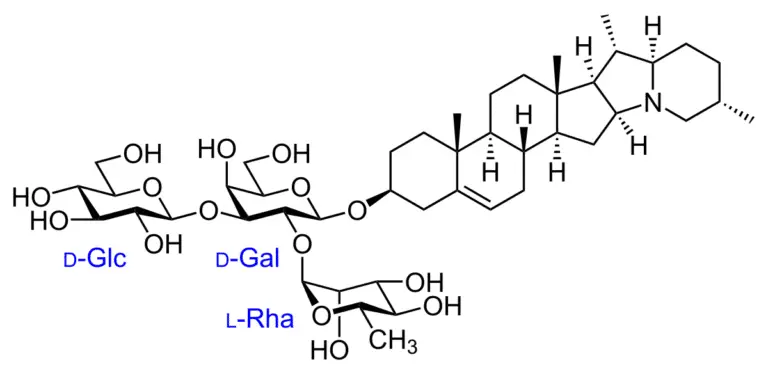Positive Discipline Strategies for Parents
Welcome to our article on positive discipline strategies for parents. In this guide, I will discuss effective discipline techniques that can help you foster respect, cooperation, and responsible behavior in your children. By implementing these strategies, you can create a nurturing environment that promotes growth and good behavior.
Research from the American Academy of Pediatrics (AAP) has shown that certain disciplinary measures, such as spanking and using harsh words, are not only ineffective but also harmful to children’s well-being. Instead, focusing on positive discipline techniques is essential to ensure healthy development.
Throughout this article, we will explore a range of strategies recommended by the AAP for positive discipline. These include show and tell, setting limits, giving consequences, and actively listening to children. By understanding and implementing these techniques, you can build a strong foundation for your child’s emotional and behavioral well-being.
Key Takeaways:
- Positive discipline strategies are important for fostering respect and cooperation in children.
- Spanking and harsh words are harmful and ineffective disciplinary measures.
- Show and tell, setting limits, giving consequences, and hearing children out are recommended positive discipline techniques.
- Positive reinforcement and natural rewards can motivate positive behavior.
- Redirection and selective ignoring are effective for managing behavior.
Tips for Positive Discipline
When it comes to raising well-behaved and responsible children, positive discipline strategies play a crucial role. The American Academy of Pediatrics (AAP) recommends the following techniques for parents:
- Show and tell: Clearly explain to your child what is right and wrong behavior, and why certain actions are not acceptable.
- Set clear and consistent rules: Establish rules that are age-appropriate, easy to understand, and consistent across different situations.
- Calmly explain consequences: When your child misbehaves, calmly explain the consequences of their actions. Help them understand the impact of their behavior on themselves and others.
- Actively listen to children: Take the time to listen to your child’s thoughts and emotions. This helps them feel heard and understood.
- Give attention: Give your child positive attention when they are behaving well. Acknowledge their good behavior and encourage them to continue it.
- Catch them being good: Notice and praise your child when they make good choices or show positive behavior. This reinforces their sense of accomplishment and encourages repeat behavior.
- Know when not to respond: Some behaviors are best ignored, especially if they are attention-seeking or harmless. By withholding a reaction, you discourage the behavior.
- Be prepared for challenging situations: Anticipate situations that may trigger negative behavior and have strategies in place to address them in a positive manner.
- Redirect bad behavior: When your child engages in inappropriate behavior, redirect their attention to something more positive and acceptable.
- Implement time-outs when necessary: Time-outs can be used for young children to temporarily remove them from a situation and give them time to calm down and reflect on their behavior.
These positive discipline strategies help teach children self-control and responsibility while promoting healthy development. By implementing these techniques consistently, parents can build a strong foundation of positive behavior and nurturing relationships with their children.
Positive Reinforcement and Natural Rewards
When it comes to discipline, proactive strategies that promote positive behavior have been shown to be more effective than punitive measures. Positive reinforcement and natural rewards are two methods that parents can use to encourage good behavior in their children.
Positive reinforcement involves acknowledging and praising children for their positive behavior and actions. By providing specific and genuine praise, parents can reinforce desirable behaviors and motivate their children to continue behaving in the same manner. For example, praising a child for sharing their toys with a friend or completing their homework on time.
Natural rewards are another effective discipline strategy for kids. These rewards are directly related to the desired behavior and serve as an incentive for children to continue their positive actions. For instance, allowing a child extra playtime for politely asking for more time on the trampoline or giving them a small treat for completing their chores without reminders.
Both positive reinforcement and natural rewards focus on acknowledging and reinforcing positive behavior, rather than solely addressing negative behavior. These techniques promote a healthy and supportive environment, reducing the need for disciplinary measures.
Benefits of Positive Reinforcement and Natural Rewards:
- Encourages children to repeat positive behaviors
- Fosters a positive and supportive parent-child relationship
- Motivates children to make responsible choices
- Reduces the need for punitive measures
- Promotes self-confidence and self-esteem
| Positive Reinforcement | Natural Rewards |
|---|---|
| Provides specific and genuine praise for positive behavior | Rewards children with incentives directly related to desired actions |
| Reinforces good behavior and encourages children to continue their positive actions | Motivates children to make responsible choices to earn rewards |
| Builds self-esteem and self-confidence | Fosters a sense of responsibility and accomplishment |
Redirection and Selective Ignoring
When it comes to positive discipline techniques, redirection and selective ignoring can be valuable proactive discipline strategies for parents. These techniques help guide children towards appropriate behavior while discouraging attention-seeking or undesirable actions.
Redirection is a powerful tool for managing children’s behavior. If a child is engaging in an activity that could be dangerous or inappropriate, redirecting their attention to a different activity can be effective in steering them towards more positive actions. By offering an alternative activity or redirecting their focus to a more suitable task, parents can effectively guide their child’s behavior in a more constructive direction.
On the other hand, selective ignoring can be a useful technique for discouraging attention-seeking behaviors that are not harmful or dangerous. By not responding to undesirable behavior, parents can avoid reinforcing such actions and decrease their frequency over time. Selective ignoring teaches children that engaging in certain behaviors will not elicit the attention or reaction they are seeking, leading them to gradually shift their focus to more appropriate ways of seeking attention or addressing their needs.
As parents, it is essential to evaluate the context and assess whether redirection or selective ignoring is the most appropriate proactive discipline strategy for the situation. Choosing the right technique can help foster positive behavior and encourage children to develop self-control and make responsible choices.

Implementing positive discipline techniques like redirection and selective ignoring can contribute to a harmonious parent-child relationship and positively shape a child’s behavior. By using these proactive discipline strategies, parents create an environment that promotes cooperation, respect, and healthy development.
Calm Consequences and Time-ins
When it comes to discipline strategies for children, incorporating calm consequences and time-ins can be highly effective. These positive discipline techniques promote understanding, responsibility, and collaboration between parents and children.
When a child engages in inappropriate behavior, it is crucial to calmly explain the consequences that will follow. By doing so, parents can help their children understand the impact of their actions and encourage them to make better choices in the future. The key is to maintain a composed demeanor, avoiding harsh words or physical punishment that can be harmful and counterproductive.
Another approach to positive discipline is the use of time-ins as an alternative to time-outs. With time-ins, parents create a safe space where they sit down with their child to discuss the behavior and work together to find solutions. This technique fosters mutual respect, problem-solving skills, and the development of a positive parent-child relationship.
Implementing calm consequences and time-ins cultivates an environment where discipline is not about punishment but about teaching valuable life lessons. By using these positive discipline techniques, parents can guide their children towards responsible behavior and create a nurturing atmosphere for their growth and development.

Benefits of Calm Consequences and Time-ins:
- Teaches children about responsibility and accountability
- Encourages better decision-making skills
- Promotes open communication and problem-solving
- Fosters a positive parent-child relationship
- Helps children understand the consequences of their actions
Engaging with Children of Different Ages
Different age groups require different discipline strategies. It’s essential for parents to adapt their approaches to meet the unique needs of their children at each stage of development. By understanding the specific challenges and characteristics of each age group, parents can employ effective discipline techniques that encourage positive behavior and foster healthy growth.
Infants
Positive discipline for infants revolves around setting examples of behavior and using positive language. Infants learn by observing their caregivers, so it’s important for parents to model appropriate conduct and demonstrate kindness, patience, and respect. Gentle guidance, such as redirecting their attention and providing soothing alternatives, can help infants learn about boundaries and develop self-regulation skills.
Toddlers
Toddlers are known for their curious and energetic nature, which often leads to testing boundaries. Positive parenting techniques for toddlers include redirection, teaching nonviolent behavior, and implementing short time-outs when necessary. Redirection involves diverting a toddler’s attention from an undesirable behavior to a more appropriate activity. Teaching nonviolent behavior helps toddlers understand the importance of kindness and empathy towards others. Time-outs can be used sparingly, allowing the child to calm down and reflect on their actions.
Preschool-age Children
Disciplining preschool-age children requires a combination of age-appropriate chores, teaching respect towards others, and encouraging emotional expression and management. Assigning simple tasks or chores helps children develop a sense of responsibility and enhances their self-esteem. Teaching them how to interact with others respectfully fosters positive social skills. Furthermore, guiding children to identify and express their emotions appropriately helps them build emotional intelligence and effectively manage their feelings.
Grade School-age Children
With grade school-age children, discipline strategies can shift towards engaging them in conversations about choices and expectations. Collaborative problem-solving can be a valuable tool in this stage, as it empowers children to take responsibility for their actions and contribute to finding solutions. Parents can set clear rules and establish logical consequences for both positive and negative choices, encouraging children to make responsible decisions and learn from their experiences.
Adolescents and Teens
Positive discipline strategies for adolescents and teens focus on fostering mutual dialogue and involvement in problem-solving. Open communication is vital during this stage, allowing parents to understand their teenagers’ perspectives and concerns. Encourage independence while still setting reasonable boundaries. Providing guidance and support rather than imposing strict control helps teenagers develop decision-making skills and become responsible individuals.
| Age Group | Key Discipline Strategies |
|---|---|
| Infants | Setting examples of behavior, positive language, gentle guidance, redirection |
| Toddlers | Redirection, teaching nonviolent behavior, short time-outs |
| Preschool-age Children | Age-appropriate chores, respect for others, emotional expression and management |
| Grade School-age Children | Conversations about choices and expectations, logical consequences, problem-solving |
| Adolescents and Teens | Mutual dialogue, problem-solving, encouragement of independence |
Conclusion
Implementing positive discipline strategies is crucial for parents to promote respect, cooperation, and responsible behavior in their children. By utilizing techniques such as show and tell, setting limits, giving consequences, positive reinforcement, redirection, and calm consequences, parents can foster positive relationships and teach valuable life skills. It is important to note that discipline should focus on teaching good behavior rather than punishing bad behavior. Extensive research has shown that physical punishment and harsh verbal discipline are ineffective and can have negative long-term effects on children’s well-being.
Positive discipline strategies empower parents to guide their children’s growth and development effectively. By employing these techniques, parents can instill values of respect, responsibility, and self-control in their children. Moreover, positive discipline techniques not only curb undesirable behavior but also cultivate a loving and supportive environment in the parent-child relationship.
By prioritizing positive discipline and avoiding punitive measures, parents can shape their children’s behavior in a healthy and nurturing manner. Positive discipline strategies, including show and tell, setting boundaries, using consequences, providing positive reinforcement, redirecting, and implementing calm consequences, ensure that children develop essential life skills, moral values, and emotional well-being. By cultivating an environment of understanding, love, and guidance, parents equip their children with the tools necessary to navigate challenges and become responsible, respectful individuals.
FAQ
What are positive discipline strategies?
Positive discipline strategies are techniques used by parents to foster respect and cooperation in children while nurturing growth and good behavior. These strategies focus on teaching good behavior rather than punishing bad behavior and have been recommended by the American Academy of Pediatrics (AAP).
What are some tips for positive discipline?
Some tips for positive discipline include showing and telling children right from wrong, setting clear and consistent rules, calmly explaining consequences, actively listening to children, giving them attention, catching them being good, and redirecting bad behavior. It is also important to know when not to respond and be prepared for challenging situations.
How can positive reinforcement and natural rewards be used in discipline?
Positive reinforcement involves praising children for their good behavior and specific acts of kindness or responsibility, which encourages them to continue behaving in desirable ways. Natural rewards can also be used to motivate children, such as granting extra playtime for polite requests. These techniques promote positive behavior and reduce the need for disciplinary measures.
What is the role of redirection and selective ignoring in discipline?
Redirection is a helpful strategy for managing children’s behavior. If a child is engaging in an activity that could be dangerous or inappropriate, redirecting their attention to a different activity can be effective. Selective ignoring, on the other hand, involves not responding to attention-seeking behaviors that are not dangerous or harmful, which can decrease their frequency over time.
How can calm consequences and time-ins be used in discipline?
Calm consequences are an important aspect of positive discipline. When a child engages in inappropriate behavior, calmly explaining the consequences and following through with them can help teach responsibility and encourage better choices. Time-ins can also be used as an alternative to time-outs, where the parent sits down with the child to discuss their behavior and solutions, fostering a positive relationship.
How do discipline strategies differ for children of different ages?
Discipline strategies vary depending on the age of the child. For infants, positive discipline involves setting examples of behavior and using positive language. Toddlers benefit from redirection, teaching nonviolent behavior, and using short time-outs when necessary. Preschool-age children can be given age-appropriate chores, taught to treat others with respect, and encouraged to express and manage their emotions appropriately. Grade school-age children can be engaged in conversations about choices and expectations, while adolescents and teens respond well to positive disciplinary strategies involving mutual dialogue and problem-solving.
Why are positive discipline strategies important?
Positive discipline strategies are important for parents to foster respect, cooperation, and responsible behavior in children. These strategies promote healthy development, teach important life skills, and build positive relationships between parents and their children. Research has shown that physical punishment and harsh verbal discipline are ineffective and can have negative long-term effects on children’s well-being.






